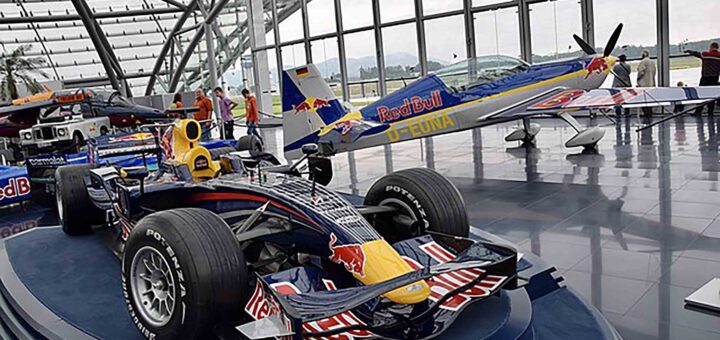Getting up to speed on Formula One

By Zafir Nagji, Staff Writer
Formula One (F1) is almost universally considered to be the pinnacle of motorsport; 20 of the world’s best drivers put themselves to the test week-after-week in various locations across the world. Recently, the sport has seen exponential growth in the North American market with the astounding success of Netflix’s Formula One behind-the-scenes style program, Drive to Survive. So, whether you are new to the fastest sport on the planet or a grizzled veteran of motorsports, this article can help give you a better understanding of all of the elements that make up a Formula One weekend and season.
Teams
The modern-day F1 grid is made up of ten teams, known as constructors, and are split into three separate groups (frontrunners, midfielders and backmarkers) that are determined by how much funding each teams receive. Before 2021, teams at the front of the pack were spending over $500 million (USD) per year on their F1 program, while teams at the bottom of the standings were spending as little as $117 million. This led to the governing body of motorsports, the Federation Internationale de l’Automobile (FIA), to introduce a budget cap of $140 million starting in the 2021 season. This was reduced even further in the year after its introduction in the hopes that the competitive advantage between bigger and smaller teams would be reduced significantly. Since then, the racing has been much more exciting.
The 10 constructors use the full extent of their resources under the budget cap to build the most advanced motor vehicles ever seen. Weighing less than a one ton and powered by a engine-electric motor system with over 1,000 horsepower, the cars can reach top speeds over 370 km/h.
In 2023, the only team in the front-running bracket has been Red Bull Racing. Thanks to the impeccable performances of Max Verstappen, the excellent engineering of the Red Bull’s ‘RB19’ racecar, and intelligent race strategy from team boss Christian Horner, the Austrian team have won every race this season, aside from the Singapore Grand Prix.
In the tightly contested midfield are teams Mercedes-AMG Petronas, Ferrari, Aston Martin Aramco Mercedes and McLaren-Mercedes.
Meanwhile, at the back of the pack are Alpine-Renault, Alfa Romeo Ferrari, Haas Ferrari, and AlphaTauri Honda Red Bull Powertrains.
Drivers
Each team employs the services of two drivers that account for a total of 20 racers participating in each grand prix. Along with their two main drives, each team has a third driver, known as the reserve, who is responsible for gathering data in their simulator and on-track testing sessions. The reserves also fill in for drivers who are unable to compete in races, as was seen when AlphaTauri reserve driver, Liam Lawson, replaced Daniel Riccardo when he broke Ricciardo broke his hand at the Dutch Grand Prix
A driver’s seat on the grid is never safe either. For example, if a driver is underperforming they can potentially lose their seat in the middle of a season regardless of their contracts with teams. This is especially true when a team has up-and-coming and highly-touted prospects waiting for their opportunity to get in an F1 car.
Some of the more recognizable names on the grid include seven-time world champion Lewis Hamilton of Mercedes-AMG, three-time world champion Max Verstappen of Red Bull Racing, and two-time world champion Fernando Alonso.
There are also highly skilled drivers still looking for their first world title, like Ferrari’s Carlos Sainz and Charles LeClerc, Mercedes-AMG’s George Russell, and McLaren’s Lando Norris.
For those looking for underdogs or young guns to root for, keep an eye out for Britian’s Alex Albon who is looking to get the most out of his Williams car or witness rookie driver Oscar Piastri who has been exceeding all expectations with McLaren.
Tracks
Apart from Antarctica, each continent hosts at least one race weekend per year. This year was F1’s busiest season to date with 23 races on the calendar, and next season promises to be even crazier with an additional race being added in China.
In recent years, F1 has become so popular that three cities in the United States now host separate races. The United States Grand Prix, which is held at the Circuit of the Americas in Austin, Texas, the Miami Grand Prix and the brand-new Las Vegas Grand Prix. The F1 circus also makes a yearly stop in Montreal for the Canadian Grand Prix.
One of the most exciting elements of the sport’s racetrack selection is the variability of their track designs — no two tracks are the same. Meaning, each circuit will provide a new and unique challenge for the drivers and their teams.
Weather and location of the event also play a monumental role in race weekends, as the drivers are constantly challenged by ever-changing track conditions. Some tracks also create ‘races of attrition’ due extreme heat and humidity that can test the endurance of both driver and car. This was the case during the Qatar Grand Prix, where a plethora of drivers were rushed to a medical centre following their on-track sessions. Williams driver, Logan Sargeant, was even forced to retire on the 41st lap of the Qatar Grand Prix due to acute heat exposure.
Lingo
Every sport has its own unique terminology that fanatics, competitors and commentators use to describe what is happening, and Formula One is no different.
Here are 12 terms every viewer should know before they watch a race broadcast.
Box: team communication to driver telling them to make a pit stop and switch tires.
Pole position: driver that starts in first place (P1).
Drag reduction system (DRS): when a driver is within one second of the car in front of them, they can flatten the top panel of their rear wing, reducing aerodynamic resistance (drag) and increasing the car’s top speed by over 20 km/h. DRS can only be triggered at designated detection zones.
Hairpin: tight corner, sharp u-shape.
Chicane: a zig-zag curve often used after fast sections to slow cars down.
Safety car: a modified street car with a siren that leads formation laps and enforces a speed limit when track conditions are declared unsafe, such as in extreme weather conditions or after a crash has occurred. If the risk is not massive, a virtual safety car (VSC) will be used wherein the drivers follow a strict speed limit without having to follow a physical car. The race resumes when the safety car pulls back into pits and the lead driver decides to put his foot on the gas.
Formation lap: the lap right before a race where drivers follow the safety car to warm up tires and reach ideal temperatures and tire pressure before lining up in order of their qualifying results.
Green flag: when the track is safe to race on — full speed ahead!
Yellow flag: A flag that is waved when there is a noticeable safety risk on track, such as a crash, broken down car or excessive debris on track.
Red flag: The fag that is waved in order to stop the race stops. All cars return to pits until race restarts in the same order. Teams often use this time to get a free pit stop, but then have to start from the pit lane rather than on the track.
Blue flag: Often waved in qualifying and practice sessions to tell slower drivers to move out of the way for drivers on fast laps. This also happens in races when leading drivers come across drivers who are a lap or more behind them.
Yellow and red-striped flag: A warning to drivers, informing them that there is reduced grip levels due to oil or water on the track.
Black and white flag: Warns a driver for unsportsmanlike behaviour, such as exceeding track limits more than two times.
Black and orange flag: Warns a specific driver that the damage to their car is a potential safety risk and demands they visit the pits for a repair or retire from the race.
Penalties: Drive-in time penalties require drivers to visit their pit box and wait for an allotted amount of time before completing their pit stop and resuming the race. Grid-place penalties are assessed when drivers do not serve their penalties during a race and are enforced on the racer directly after the race.
Checkered flag: Waved at the end of the race as drivers cross the finish line.
Weekend Schedule
There are two distinct types of weekends in a Formula One season. Regular weekends follow a three-day schedule, starting on Friday with ‘free practices one and two.’ During these one-hour long sessions, teams and drivers gather data by driving the car on the track in order to figure out the best aerodynamic and mechanical setup for qualifying and the race.
On Saturday, ‘free practice three’ takes place for an hour and gives drivers a chance to warm up for their qualifying session, which happens right after. Qualifying is crucial for a drivers weekend as it determines the starting order for the upcoming race in order of fastest lap to slowest lap. The grid-wide qualifying session is split into three sessions: qualifying one (Q1), qualifying two (Q2) and qualifying three (Q3). Q1 runs for 18 minutes and gives all 20 drivers the chance to set their fastest possible lap. Q2 is 15 minutes long and includes the 15 fastest drivers from the previous Q1 session. The five slowest drivers are cut from the qualifying session. The same pattern is continued in the 12-minute long Q3 session, with the 10 fastest drivers from Q2.
To increase viewership on their Friday and Saturday sessions, ‘sprint weekends’ were introduced in 2021 and have grown in popularity since.
There are six sprint weekends in the 2023 season — the Azerbaijan, Austrian, Belgian, Qatar, United States, and Brazilian Grand Prixs. During these weekends, the Friday consists of one free practice session that is followed up by qualifying for the main race on Sunday. And, on Saturday, a shortened qualifying session, known as the sprint shootout, takes place to set the starting order for the sprint race. Once the order is set, drivers get a short break before lining up on the track for a short race around the circuit. These races last around 30 minutes and award points to the top-eight drivers.
Whether or not the weekend includes a sprint race, Sunday will always be the day of the main grand prix.
While it is a seemingly complicated sport, Formula One gives viewers the chance to watch some of the fastest and most fearless drivers in the world pilot the most technologically advanced cars across different tracks and city circuits across the world. It is highly entertaining and one of the most cerebral sports in the world. Now, with newfound knowledge about the motor sport, we want to know:
Will you be watching tuning in to the next grand prix?





